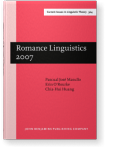Word Order and Minimalism
The minimalist program, with its clear separation between constituency, relevant to LF, and linear order, relevant to PF, makes it possible and, I would claim, natural to pursue an approach to ‘free’ word order as the result of underspecification.
In contrast with the prevailing tradition that identifies one basic order and derives the rest by different ‘movement’ operations, I will suggest that it is the lack of ordering stipulations that allows the free permutations of major sentence constituents in languages like Warlpiri (Hale 1983) and the different subject positions in languages like Spanish.
This proposal is not equivalent to the postulation of ‘flat’ structures for certain languages. The structures delivered to LF are necessarily hierarchical, given the properties of Merge, which combines two elements at a time. In this respect, Warlpiri and English are alike. It is only the PF structures that can differ with respect to how much stipulation is needed.
